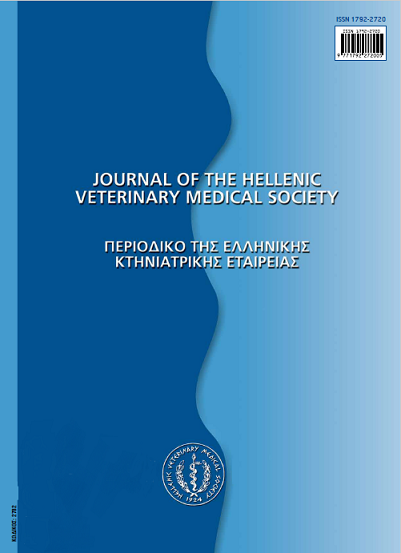Post-partum pathological conditions in the bitch - Part I

Abstract
Various disorders, some of which are life-threatening, can occur in bitches during the Puerperium. In this series of two articles, a detailed review of the literature on puerperal pathological conditions, along with excerpts from the authors' clinicalexperience and photographs, is presented. Initially, a brief account of the physiological processes during the Puerperium is presented. The hormonal changes, the changes in the genital system and the behavioural changes taking place as the genital system progressively returns to the non-pregnant state, are described. Subsequently, the various disorders, which are distinguished into systemic diseases, diseases of the mammary glands and diseases of the uterus, are reviewed. Systemic disorders that are manifested during the Puerperium are the puerperal hypocalcaemia and the abnormal maternal behaviour. Hypocalcaemia occurs usually after whelping, as calcium requirements of the bitch are increased due to milk production. The disease is due to the increased calcium requirements coupled with either a decreased intake of calcium (primary) or an inability to absorb it from the intestine or mobilise it from the bones (secondary). Abnormal maternal behaviour can be the consequence of factors causing nervousness, pain or disturbance of the bitch. Factors, such as genetic predisposition, caesarian section, young age or even the puppies themselves, may also trigger this condition. The puerperal mammary diseases are mastitis, agalactia and galactostasis. Mastitis is a disease of bacterial aetiology {Escherichia coli, Staphylococcus spp. ήStreptococcus spp.) occurring with acute or sub acute-chronic form. Agalactia is the inability for milk production and can be either primary or secondary; it is defined as full agalactia or hypogalactia. Galactostasis refers to the abnormal passage and expression of milk from the teats, resulting in increased accumulation into the mammary glands. The pathological conditions of the uterus include post-partum metritis, uterine prolapse, retention of foetal membranes, foetal retention, subinvolution of the placental sites and uterine haemorrhage. Post-partum metritis is caused by bacteria (mainly E. coli) invading the uterus during or immediately after whelping and occurs with systemic and genital signs. Uterine prolapse (full or partial) is usually the consequence of vigorous embryo manipulations or intense tenesmus of the bitch. Foetal retention is the consequence of dystocia or of misuse of long-acting progestagens. Subinvolution of the placental sites is the consequence of the erosion of the uterine wall by trophoblast-like cells; often, this erosion extends down to involve the entire mucosa and may even invade the myometrium. Puerperal haemorrhage occurs more frequently in bitches with pre-existing disorders of blood coagulation factors. All the above pathological conditions may cause serious problems to the affected bitches. For a successful treatment, early and correct diagnosis is important. For each condition, the clinical signs and the paraclinical findings are described and the procedure for accurate diagnosis is described. Finally, the recommended conservative or surgical treatment for each condition is presented. It should be noted that in every case, appropriate measures for the welfare of puppies need also to be taken. Measures for a frequent and efficient post-partum monitoring of bitches and puppies are proposed, in order to prevent the development of the various pathological situations.
Article Details
- How to Cite
-
ORFANOU (Δ. Κ. ΟΡΦΑΝΟΥ) C. D., VERVERIDIS (Χ. Ν. ΒΕΡΒΕΡΙΔΗΣ) N. H., & FTHENAKIS (Γ. Χ. ΦΘΕΝΑΚΗΣ) C. G. (2017). Post-partum pathological conditions in the bitch - Part I. Journal of the Hellenic Veterinary Medical Society, 59(2), 111–125. https://doi.org/10.12681/jhvms.14953
- Issue
- Vol. 59 No. 2 (2008)
- Section
- Review Articles
Authors who publish with this journal agree to the following terms:
· Authors retain copyright and grant the journal right of first publication with the work simultaneously licensed under a Creative Commons Attribution Non-Commercial License that allows others to share the work with an acknowledgement of the work's authorship and initial publication in this journal.
· Authors are able to enter into separate, additional contractual arrangements for the non-exclusive distribution of the journal's published version of the work (e.g. post it to an institutional repository or publish it in a book), with an acknowledgement of its initial publication in this journal.
· Authors are permitted and encouraged to post their work online (preferably in institutional repositories or on their website) prior to and during the submission process, as it can lead to productive exchanges, as well as earlier and greater citation of published work.


